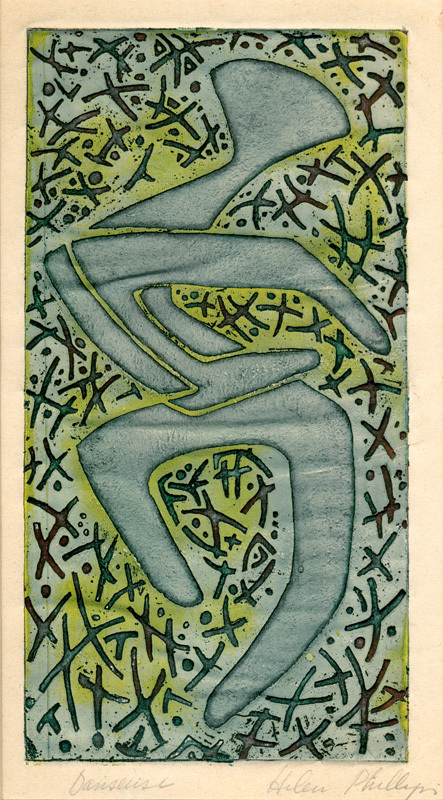
19th, 20th & 21st Century Fine Prints
707-546-7352 · fax 707-546-7924 · web: www.annexgalleries.com · email: artannex@aol.com
Danseuse by Helen Elizabeth Phillips

Danseuse
Helen Elizabeth Phillips
Danseuse
Helen Elizabeth Phillips
1913 - 1994 (biography)Helen Phillips' abstract study of a dancing figure is nearly three dimensional with the use of engraving, open bite etching and sculptural elements, and becomes dynamic with the use of patterns to suggest movement. The line she uses is immediate, almost gestural, anticipating the automatic, abstract expressionist lines other artists at the atelier were experimenting with. Phillips' primary medium was sculpture and her interest in the third dimension is revealed in her printmaking.
"Danseuse" reveals the three-dimensional nature of the printing matrix. In the case of a printing matrix, usually copper, with three distinct areas; textured, original surface, and areas that have been smoothly etched to a lower level, each area will print in a different color. The matrix is inked and wiped as an intaglio using etching ink for the first color. A hard roller with slightly runny ink is used to put a layer of ink onto the original surface for the second color.
Etching ink is often fairly viscous, but has very low tack so the second color does not adhere to the textured areas. A soft roller with stiff ink is rolled over the entire plate for the third color. The matrix is printed just like any intaglio, with a single pass through the press. When this is carefully done each color is distinct and the process is repeatable. Further colors can be added using different softness of the rollers. The final print resembles a three-dimensional topographical map.
Each step in this process is sensitive to the point that most printmakers employ it for producing monotypes and monoprints rather than editions. information on the artist, please see our biography, above.
